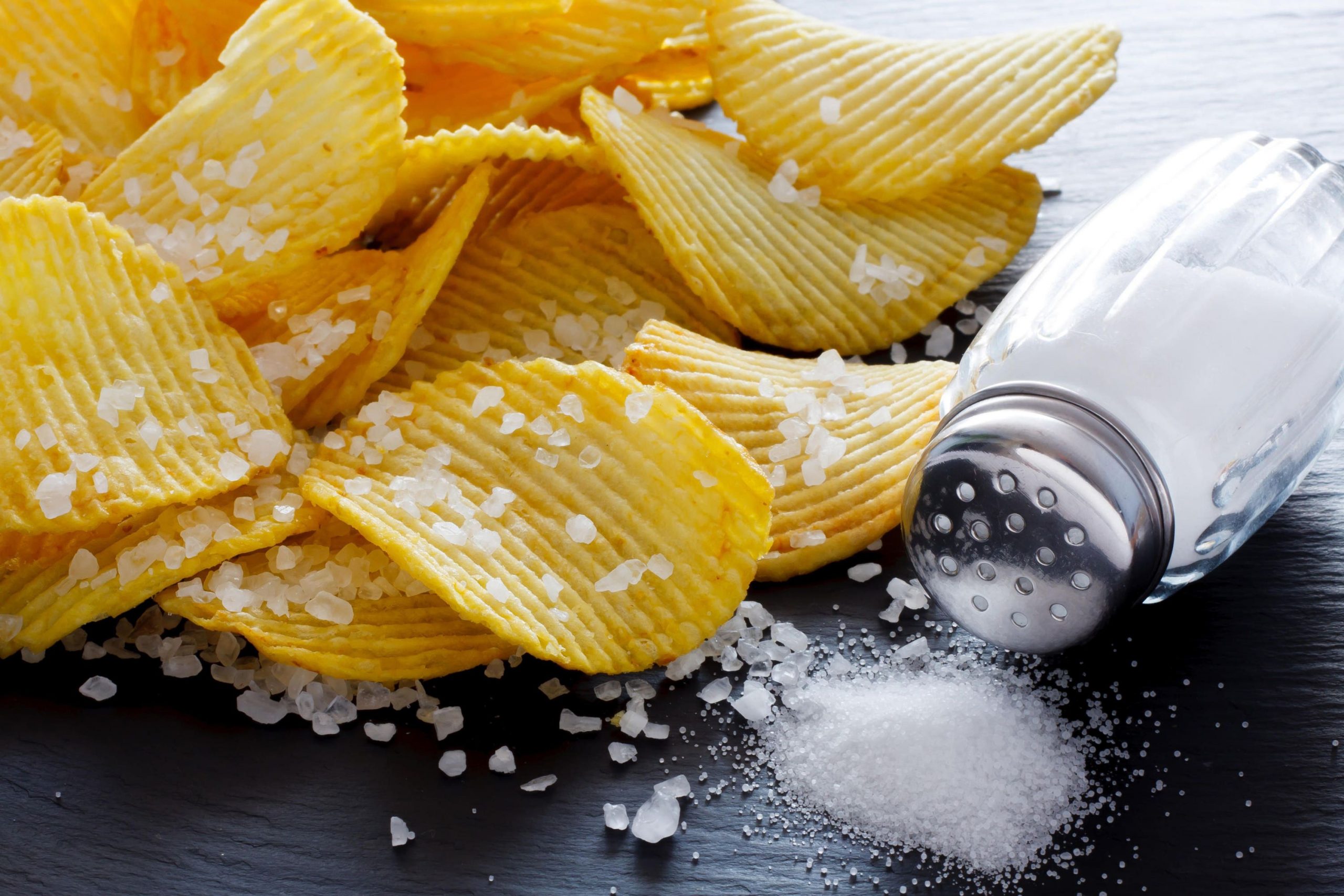Salt Awareness Week: check out healthier alternatives to some favourite foods
It’s one of our star seasonings, but it’s wise to go slowly on the salt
Salt, salt, salt… We love it on our chips, salt and vinegar crisps are a snack staple, and who can resist some salted caramel chocolate?
Even when it’s not one of the ‘main’ ingredients, salt features in so much of what we eat – even when we’re not really aware of it.
However, excessive salt intake isn’t good for our health and is linked with an increased risk of major issues such as high blood pressure, heart disease and stroke.
Salt Awareness Week 2022 will take place 14-20 March! Join us in asking the food industry to #ShaketheHabit and take out unnecessary salt from every day food products, so that we can all live longer, healthier lives #SaltAwarenessWeek https://t.co/dOt8bSbU5r pic.twitter.com/AQ1mDpzQpP
— WASSH (@WASHSALT) March 2, 2022
The World Health Organisation (WHO) recommend adults consume less than 5g (around 2g of sodium) of salt per day, while the NHS suggests no more than 6g of salt per day (2.4g of sodium).
“This is a maximum, not a target,” says Aliya Porter, registered nutritionist and Nutritionist Resource member. “The average salt intake for adults in the UK is 8g, and too much salt can also lead to bone weakening and therefore increase the risk of osteoporosis too.”
We do need a certain amount of salt – or rather sodium, which is found in salt – it’s an essential nutrient which, for example, helps maintain normal nerve and muscle function and regulate blood pressure. However, we can usually get all the sodium we need from foods without having to add any extra.

“Salt and sodium are often confused but are somewhat distinct,” explains Rohini Bajekal, registered nutritionist at Plant Based Health Professionals. “Salt, a chemical compound made up of sodium and chloride, is what we add to food. Sodium is the dietary mineral found in foods and is especially high in processed foods containing preservatives. It’s the sodium that’s linked to the adverse health issues.”
Keen to cut down on salt? To mark Salt Awareness Week (March 14-20), our experts point out some of the biggest salty culprits and alternatives you can opt for instead…
Pizza
“Pizza dough contains salt, as it helps form the structure of the bread. But the toppings we put on are often high in salt too – particularly the cheese and the processed meats like pepperoni or Parma ham,” says Porter. “A leading brand pepperoni pizza contains about 40-50% of your daily intake in one portion (half a pizza). Most people eat more than that.
“Using less cheese by grating it more finely and either opting for vegetable toppings, or swapping processed meat for tuna or unprocessed chicken, will reduce the salt content.”
Soups

As Porter points out: “Soups are often high in salt because of the stock they contain. If you’re making your own, you can either make your own stock, use a reduced salt stock, or leave it out all together and use onions, garlic, herbs and spices like cumin or curry powder for extra flavour.
“Soups are about 1g of salt per half a can – most of us eat the whole can, and that’s before you add the slice of bread you have with the soup – 17% of our recommended maximum, or 33% if we eat the whole can.”
Stir-fries
“We don’t often think of soy sauce being high in salt, but it is,” says Porter. “Fish sauce and bought stir-fry sauces are also often high in salt. For a reduced salt stir-fry, use Five Spice, spring onions, garlic and fresh ginger for lots of flavour and opt for a reduced salt soy sauce.
“Soy sauce is about 8g of salt per serving. Stir-fry sauces about 9g per serving. About 15% of our recommended maximum each.”
Processed meats, such as ham and bacon

Much as we love a BLT or ham sandwich, Bajekal says to swap for tofu and tempeh (soybeans) for a lower salt option. “Both have drastically lower salt levels: 7mg compared to 1,700mg in some cases.”
Processed sugary breakfast cereals
Sugary breakfast cereals are often laden with hidden salt and sodium too. “Swap for rolled oats, which are also a source of most vital vitamins,” says Bajekal.
Cheddar cheese
Cheese can be super salty by itself. If you’re having cheese sandwiches, there’s the salt in the bread and any added condiments or butter to consider too. “Swap for sandwiches with avocado salad, which is higher in fibre and healthy fats too. Use mixed grain bread,” suggests Bajekal.
What about those fancy salts with heftier price tags?

“Salts such as pink Himalayan salt, sea salt (such as Maldon sea salt) and rock salt all consist of around 99% sodium chloride, which is the same as salt,” says Bajekal. “Regardless of the fancy colour or price of the salt you buy, the sodium found in all these salts is what’s linked to adverse health outcomes such as hypertension (high blood pressure) among children and adults.”
How to satisfy your taste buds without salt
What if you just really like the taste of saltier foods and can’t imagine cooking without it? Thankfully, there are lots of more health-friendly ways to add flavour.
“Soya sauce – swap for low-sodium soya sauce or, even better, choose no-salt flavourings such as lime or lemon and herb and spices, including fresh garlic, ginger, chilli and rice vinegar,” says Bajekal. “Adding a fresh squeeze of lemon, lime or flavoured vinegar (such as balsamic vinegar) can bring the flavours of a dish to life without salt.
“Cook with dried herbs and spices – garlic powder, onion powder, basil, oregano, turmeric, cumin, paprika, cinnamon and fresh ground pepper are just some of the dozens of herbs and spices with incredible nutritional properties,” Bajekal adds. “These add tons of flavour without the need for salt.”
Fresh herbs are another option. “Add a bunch of fresh coriander, basil, mint or parsley to a dish such as a salad, stir-fry or stew, so you don’t need a salty substitute. This also boosts the antioxidant content of the meal,” says Bajekal.
The Press Association
Latest posts by The Press Association (see all)
- Princess Charlotte set to celebrate ninth birthday - May 1, 2024
- How edible flowers can make your dishes look and taste divine - April 30, 2024
- Beauty entrepreneur Liz Earle on turning 60: Ageing is a gift - April 30, 2024
- Unseen photo of William and Kate’s wedding released to mark 13 years of marriage - April 29, 2024
- The Tattooist Of Auschwitz author Heather Morris on why now is the perfect time for a TV adaptation - April 29, 2024




















